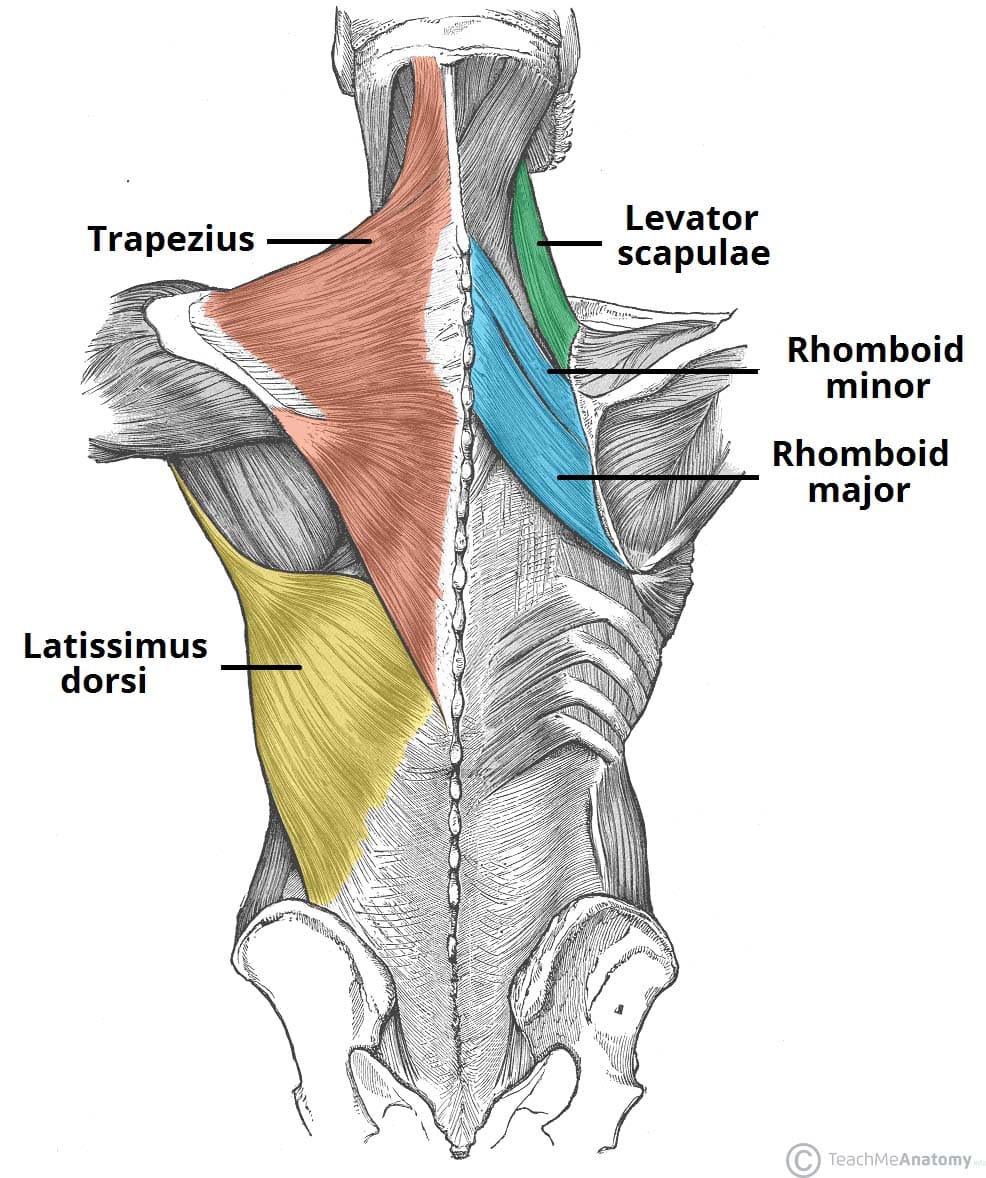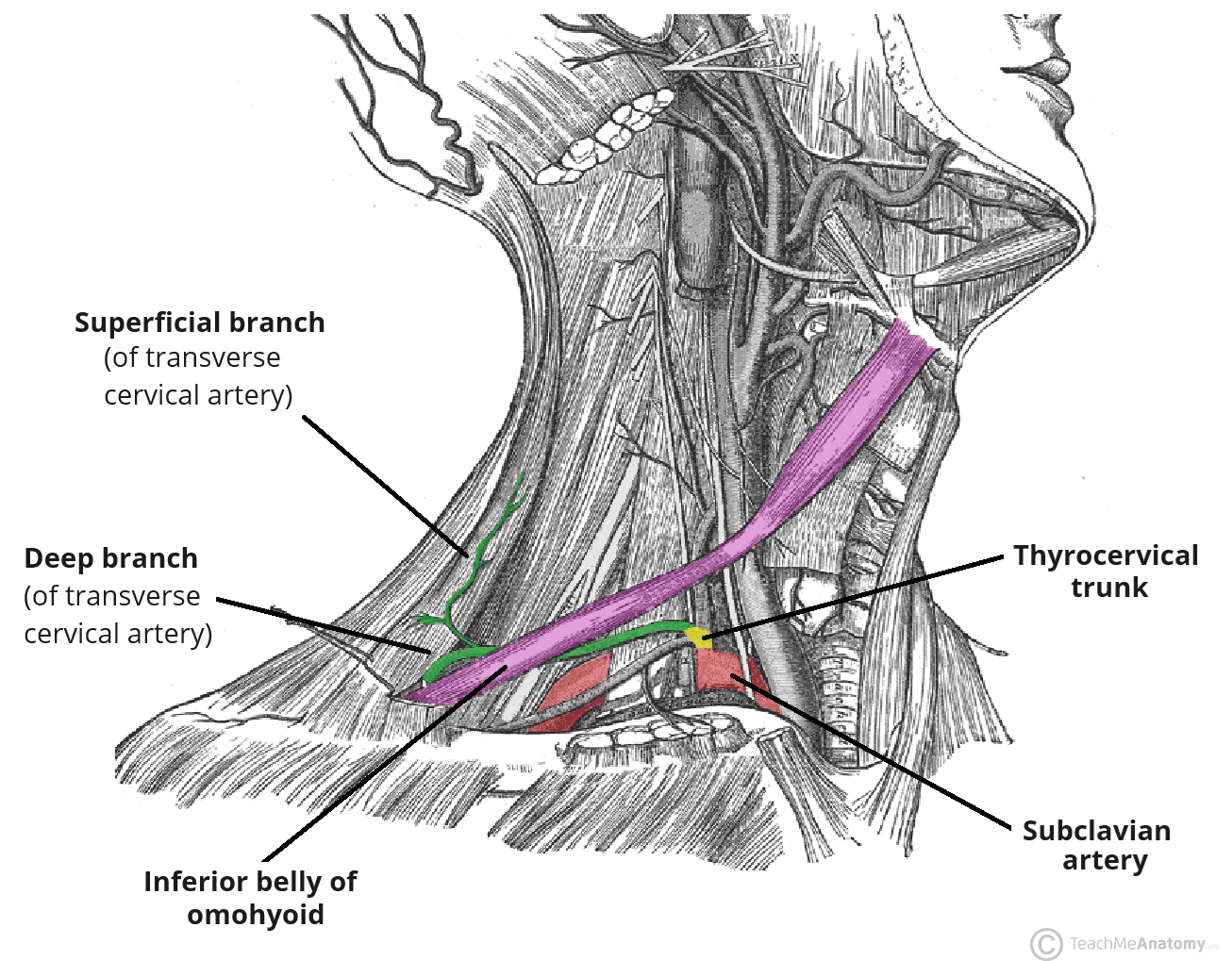The transverse cervical artery (cervicodorsal trunk) is an artery of the anterior neck. It is a branch of the thyrocervical trunk.
It contributes to the blood supply of the brachial plexus, trapezius, and the scapular anastomosis.
Course
The transverse cervical artery arises from the thyrocervical trunk at the anterior aspect of the base of the neck (the thyrocervical trunk itself is a branch of the subclavian artery).
After its origin, it passes transversely across the neck, underneath the inferior belly of the omohyoid muscle.
It then terminates by giving rise to superficial and deep branches:
- Superficial cervical artery – passes over the phrenic nerve and anterior scalene muscle, then through the brachial plexus – supplying branches to these structures. It then travels deep to the trapezius, accompanied by the accessory nerve.
- Deep cervical artery (dorsal scapular artery) – passes over the phrenic nerve and anterior scalene muscle, then through the brachial plexus – supplying branches to these structures. It then travels deep to the levator scapulae and rhomboid muscles, terminating as part of the scapular arterial anastomosis.
In some individuals, the deep cervical artery arises directly from the subclavian artery.
Supply
The transverse cervical artery supplies several structures in the neck and shoudler region via its two main branches:
- Superficial cervical artery – supplies the phrenic nerve, anterior scalene, brachial plexus, and trapezius.
- Deep cervical artery – supplies the phrenic nerve, anterior scalene, brachial plexus, levator scapulae, rhomboids and contributes to the scapular anastomosis.

Fig 2 – The trapezius, levator scapulae and rhomboid muscles receive arterial supply from the transverse cervical artery
